Before studying set design at the National Institute of Dramatic Art, Jacob Nash witnessed his first Bangarra Dance Theatre show. It was in this moment that he, as an Aboriginal man, a descendant of the Daly River people west of Darwin, connected to his culture in a completely new way. Inspired by the stunning visual elements on stage, Nash saw how Aboriginal people could express ancient stories in contemporary form.
Space in between
by Rebecca Ray, 19 January 2022
Space in between 2014–ongoing
Jacob Nash
inkjet prints on paper
Courtesy of the artist © Jacob Nash
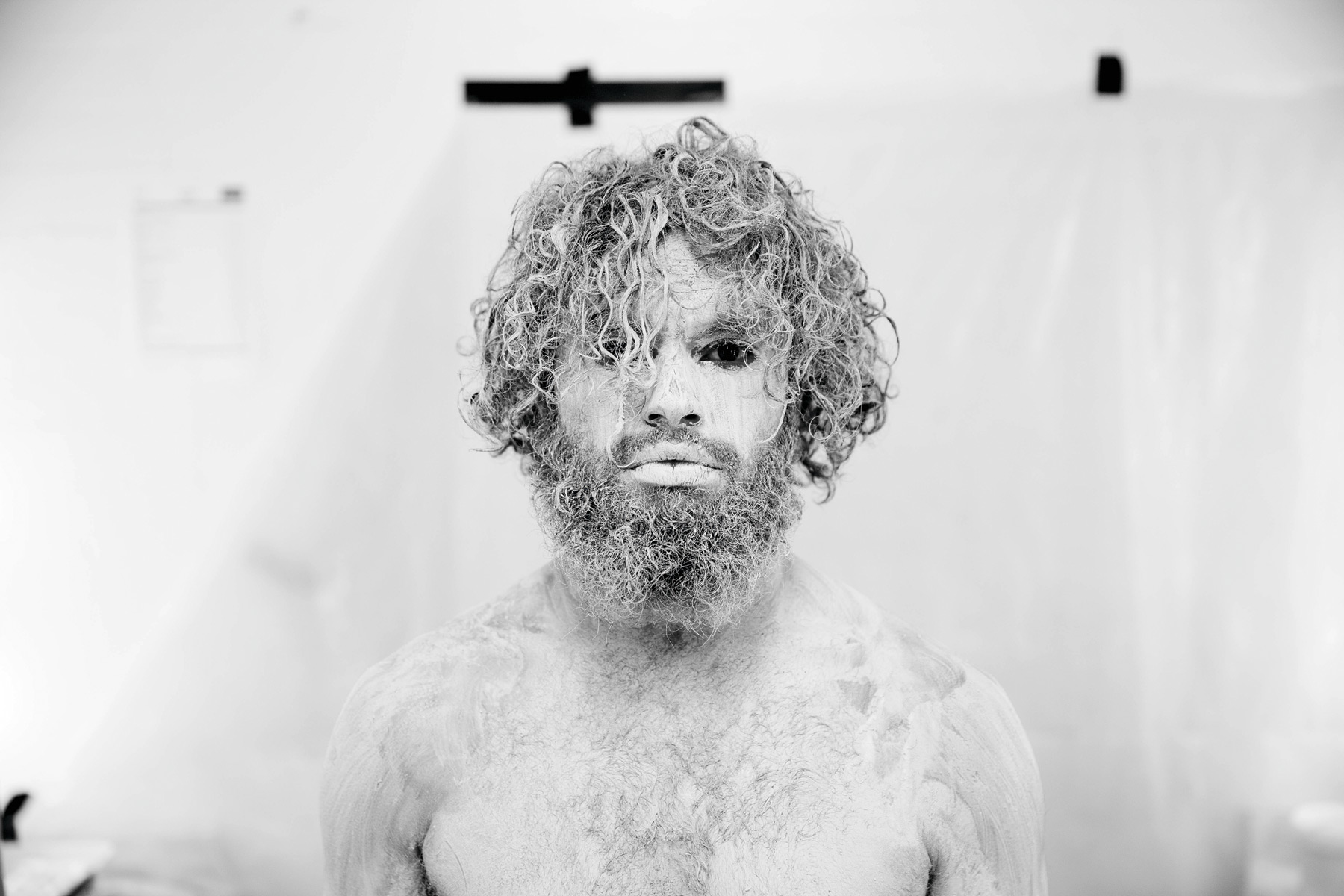
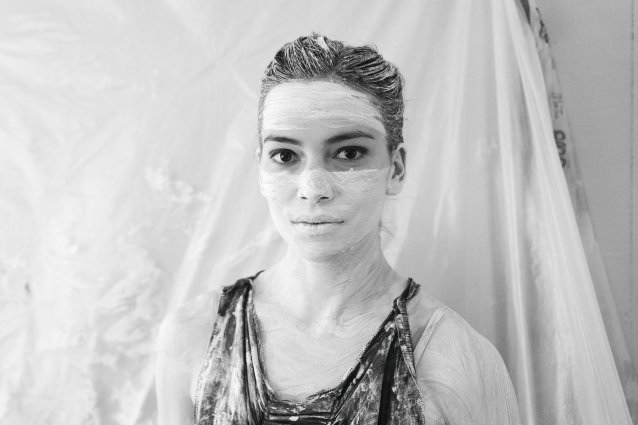
Australia’s leading Indigenous performing arts company, Bangarra is renowned nationally and internationally for theatre that combines the deep spirituality of Aboriginal culture with contemporary forms of storytelling through dance. For Indigenous Australians, spirituality is embedded within the landscape. From the rocky escarpments and flat plateaus to the vast waterways and the depths of sea and sky, the physical elements of the environment form the basis of Indigenous religious belief systems.
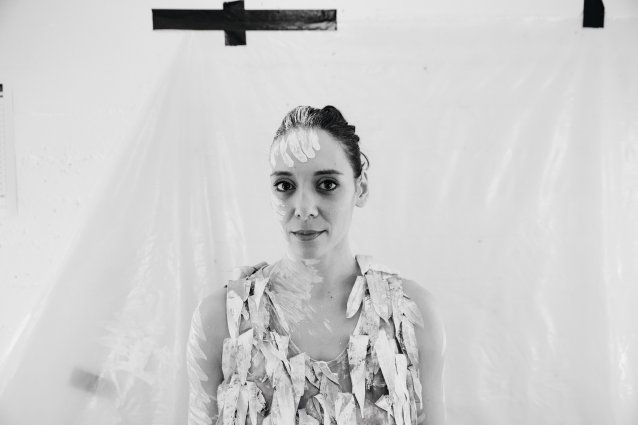
Ancestral spirits formed all elements of life and remain as living presences in the landscape they created during their journey at the beginning of time. This ancestral power is a force that energises, sustains and protects all parts of life, land and culture. The complex networks of spiritual and cultural beliefs regarding Country are conveyed through sacred stories and oral histories that are passed down through generations. These intricate and ancient knowledges are interpreted through art, dance and ceremony, maintaining the deep cultural connections, identities and ancestral significance embedded within the landscape. Drawing on these connections, Bangarra provides a unique platform for contemporary artistic expression, knowledge sharing and true celebration of the world’s oldest living culture.
Nash first worked for Bangarra in 2009 when he travelled to Arnhem Land with the company and documented the experience. The following year he designed his first set, for of earth & sky, then in 2011, he received a Green Room Award for Best Design in Dance for his work on Artefact. For over a decade, Nash has continued to design critically acclaimed sets for Bangarra’s productions as Head of Design, including receiving a 2018 Helpmann Award for Best Scenic Design for Bennelong.
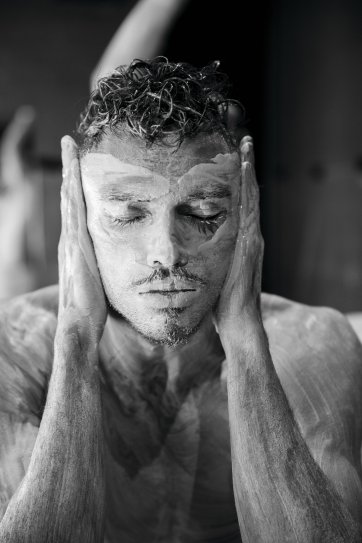

On the road with the dancers for regional tours in 2012 and 2013, Nash began photographing them before, during and after the show backstage. As he recalls, ‘I captured those moments as friends, performers and themselves as they told stories around the country.’ It was these experiences that became the catalyst for his ongoing work, Space in between.
A photographic series, Space in between captures the process of the Bangarra dancers transforming into cultural storytellers, documented from the paint-up room. Reserved for the dancers, the paint-up room is a sacred space where ochre is applied to the body in meaningful designs prior to performance. Like culture, the energy within the paint-up room is dynamic and everchanging, with every design different in application, meaning and sacredness. For the dancers, the paint-up process is an integral connector of culture whereby the powers and energy of Ancestors can be manifested, while simultaneously expressing cultural identities and histories. Nash was invited in to experience the immense energy of the dancers’ transformations.
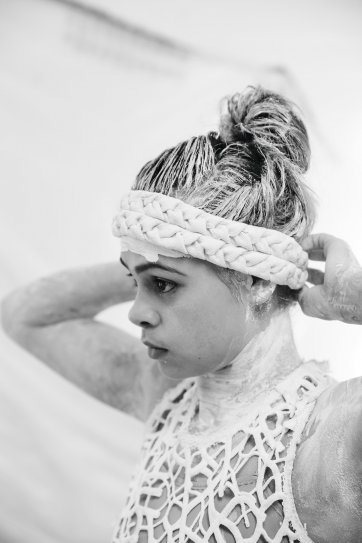
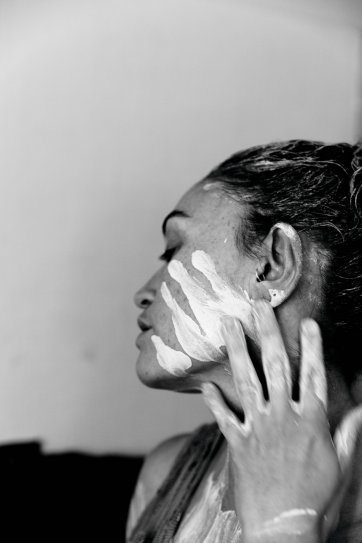
‘I love spending time in there because the energy’s never the same,’ he says. ‘I get to know people and how they respond to the camera and how they grow to respond. It’s an amazing place – just a room covered in plastic so the ochre doesn’t go everywhere, which it does anyway!’
Ochre itself is a beautiful tactile imprint of all that is sacred and has been used by Indigenous people since time immemorial to incorporate the earth into ceremony, dance and art. A natural pigment that is extracted from the earth, ochre is crushed and combined with various different fluids to create a paint-like mixture. While ochre is the generic term, each region has their own language name for the material. Featured within the photographs, the dancers here wear gapan, a white-coloured ochre sourced from North East Arnhem Land by the community.
‘It’s always about the magic of the culture and Country,’ Nash says. ‘Gapan can’t be replicated. It’s just so beautiful in how it dries and how it flakes off into the dust.’
Through photographic portraiture, a visual form reliant on capturing the essence, personality and identity of the sitter, Nash captures the true strength of each dancer’s cultural identity and expression. Here, through these images, we are invited into a place of deep spirituality and personal transformation as Nash records the powerful ephemeral moments of performance, ceremony and culture. He presents the artists in ritual, in a space that allows them to deliver the energy of Ancestors and Country, where people’s bodies are transformed into extreme brilliance.
‘Song, dance, and visual art, all fit together within one story. My relationship to design and also to these portraits and this room – the whole thing informs me,’ he reflects. ‘These guys are the storytellers and I’m in this room seeing them become those characters, moments, spirits.’
For Nash, documenting the dancers is not only a means for him to connect to the work but as a photographer, a designer, an artist, and as an Aboriginal man, it is a way to reshape the narrative that has been missing for 250 years.
Related people
Related information



Portrait 66, Summer 2021/22
Magazine
The Huxleys, National Portrait Gallery London’s masterpieces, Jennifer Higgie on portraits of women by women, Tamara Dean, Bangarra, Glynis Jones on fashion photographers, and NPG/NGV collaboration.
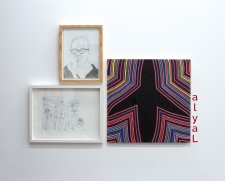
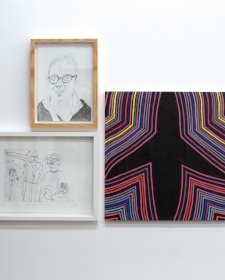
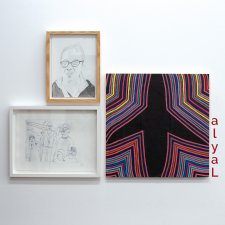
Mash-up
Magazine article by Penelope Grist
Penelope Grist delves into an insightful portraiture exhibition that asks: How do three artists see the same sitter?
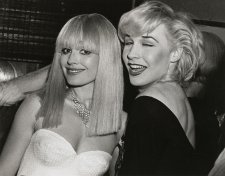
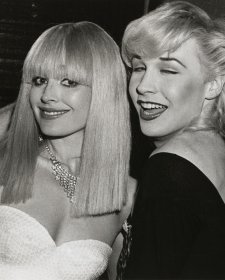
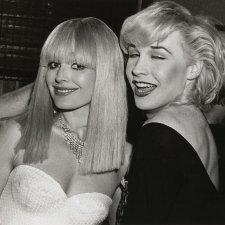
Shiny, happy people
Magazine article by Glynis Jones
Glynis Jones on the Powerhouse’s retrospective of one of Australia’s foremost fashion reportage and social photographers.







